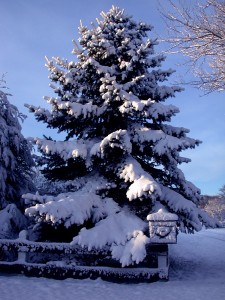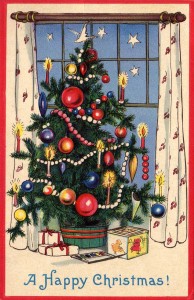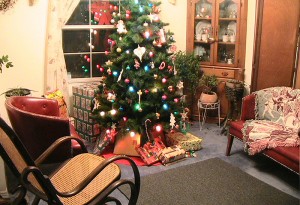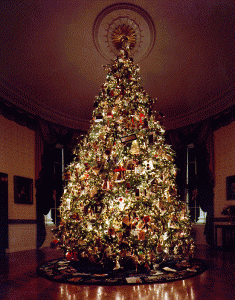Some links may be affiliate links. We get money if you buy something or take an action after clicking one of these links on our site.
Christmas All The Time is a participant in the Amazon Services LLC Associates Program, an affiliate advertising program designed to provide a means for sites to earn advertising fees by advertising and linking to Amazon.com. As an Amazon Associate, I earn from qualifying purchases.
I Think That I Shall Never See
Personally, I’m an artificial tree kind of guy but I do appreciate the natural beauty of a live Christmas tree.
Let’s focus on that word: 🌲 live 🎄.
This month, we’re talking about natural Christmas trees and how to keep them alive throughout the holiday season. It’s a classic outing to go out in the woods or to a friendly neighborhood tree farm and sawing or chopping down your very own tree. Dear God, the poor tree… With everybody carrying on about Global Warming, it seems we ought to be planting more trees instead of merrily chopping them down.
O Christmas Tree
|
There are several types of natural Christmas trees, all of which bring significant savings over artificial models.
The most commonly purchased Christmas trees are six-foot Scotch Pines. These fit nicely into an average living room. Another popular Christmas tree is the Himalayan Cedar, which has blue-green short needles and female trees will have adorable little cones on the branches. |
|
|
|
|
|
| The Eastern Red Cedar has leaves that make the branches look like braids and exudes a wonderful aroma. This bushy tree will grow best in direct sunlight and dry-to-moist, well-drained soil.
A pleasantly hypoallergenic Christmas tree is the Leyland Cypress, with dark green to gray foliage. Its branches are feathery and its scent is delightful without being overpowering. The Douglas Fir is another popular Christmas tree. It has a great fragrance and its leaves are either dark green or blue. Native to Scotland, this tree can grow up to 150 feet tall so be mindful of where you decide to plant it. |
|
|
|
|
|
|
|
The Fraser Fir has flatter, dark green needles and a pleasant aroma. The needles are closely packed and will hold ornaments in place as well as any artificial tree’s plastic bristles.
For a more citrus-like scent from your Christmas tree, you should choose the Balsam Fir, with dark green shiny needles. If you want a more durable tree that can hold your heavier ornaments, the Western White Fir is a splendid choice. It’s a strong mountain species with a naturally conical shape. |
|
|
|
|
|
8 Things To Keep In Mind For Taking Care Of Your Live Tree
‘Tis the season when lots of people drag a tree into their house and decorate it. I’d encourage you to buy a live tree that’s balled in burlap instead of a cut tree.
Many people make serious mistakes handling their live trees, defeating the original purpose and losing the tree after all. Please keep the following tips in mind for making a live tree part of your holiday celebrations and of your landscape after Santa has come and gone.
 |
6. Cut and remove any nylon string as depicted in the video in the previous section. Sometimes the diggers wrap the string around the stem of the tree. If the string is a cotton type, like sisal twine, you can leave it on the ball but remove it from the stem. If the burlap is nylon, please remove it once you have the ball in the hole. If the ball is encased in a wire basket, leave it in place until you’ve situated your tree in the hole. Clip the basket and burlap away as depicted in the video before filling and tamping the soil around the ball. | |
If you don’t have a yard and planting a live tree isn’t an option, I’d recommend an artificial tree that you can put up and take down at will for years and years. In the short term, cut trees are more cost-effective than artificial ones since they can be recycled, but this cost differential evens out after about ten years.
I hope you’ve enjoyed this examination of the live Christmas tree movement and that you’ll consider sparing a poor defenseless tree this year.





